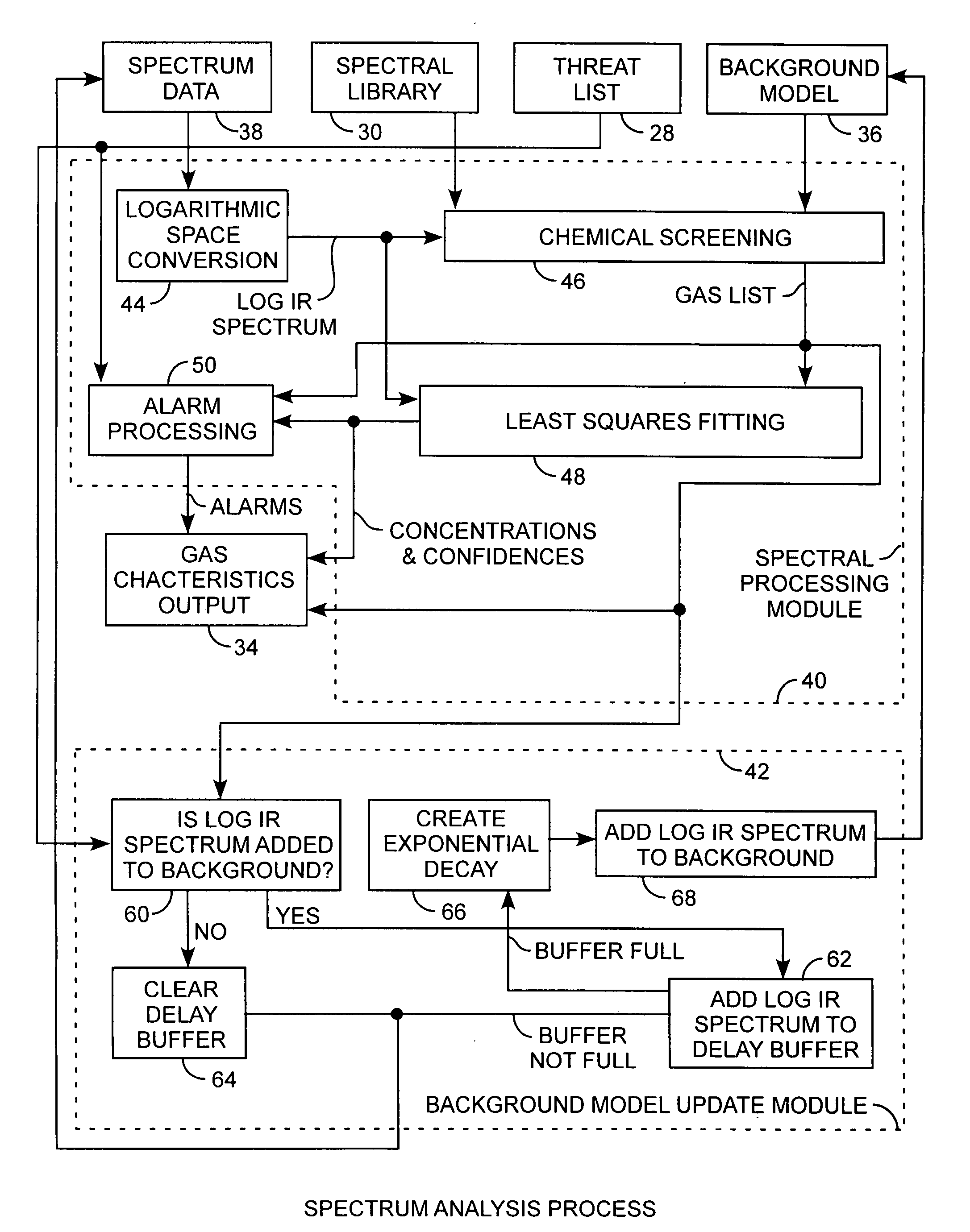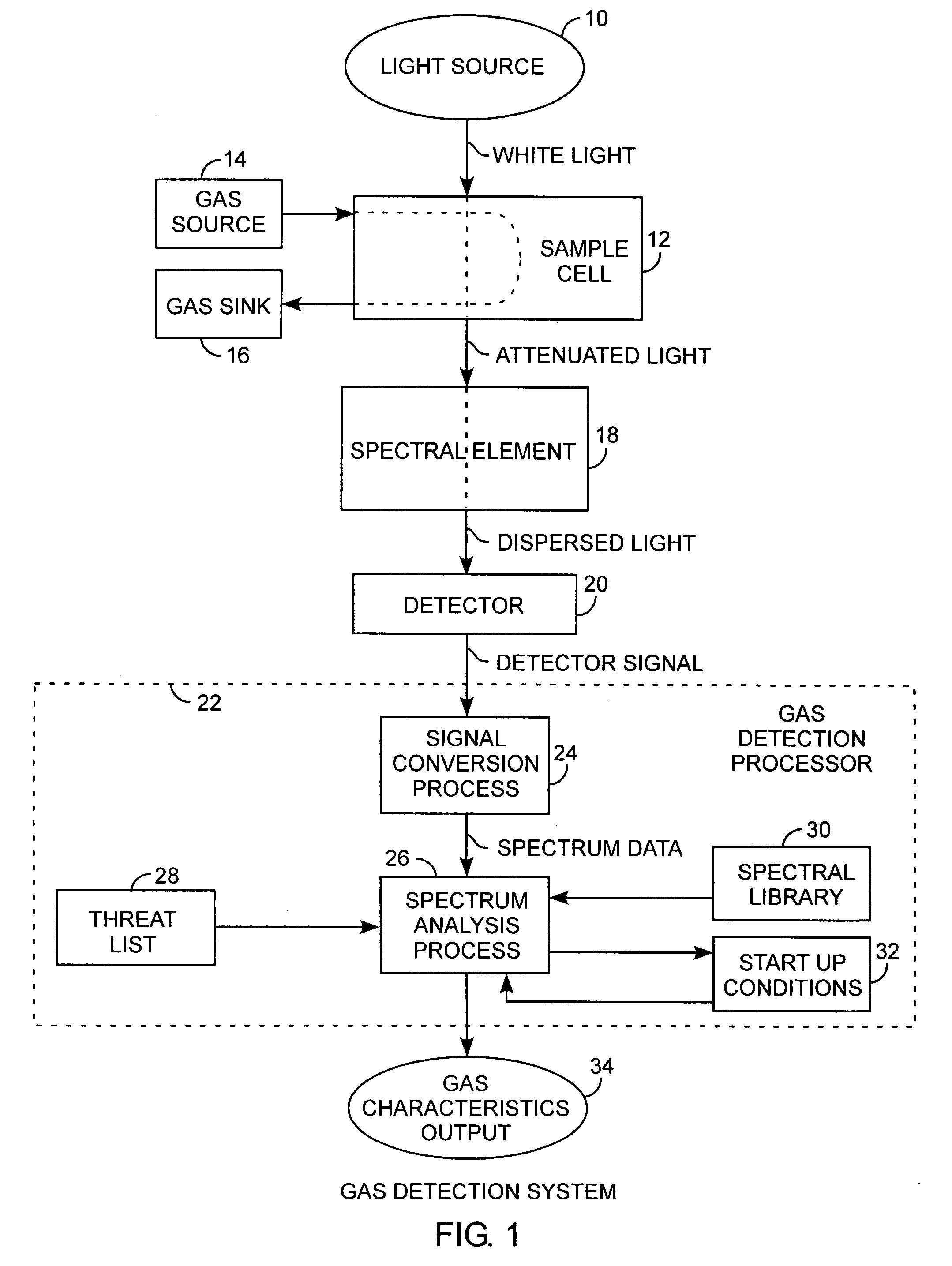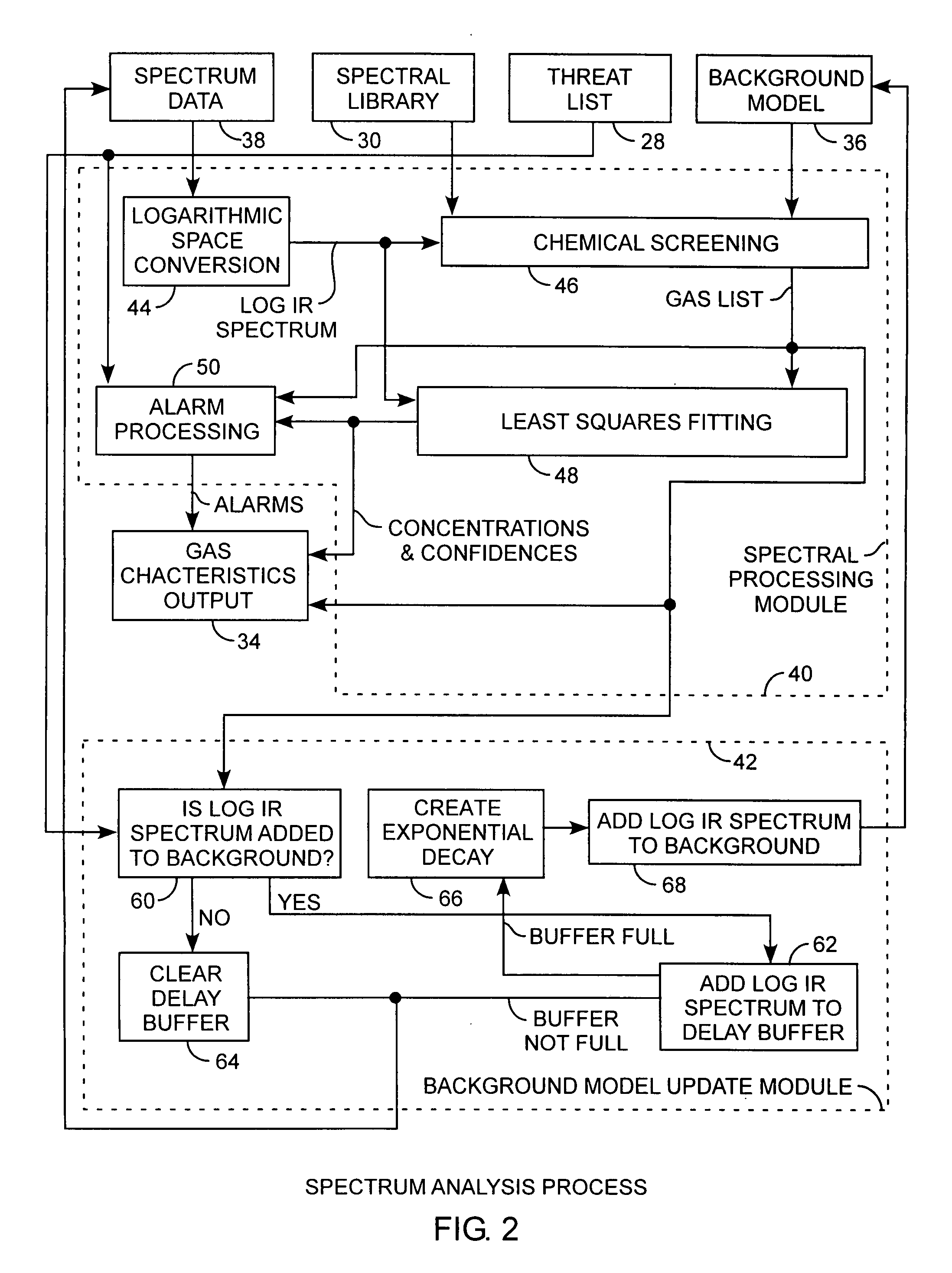Infrared gas detection and spectral analysis method
a gas detection and infrared technology, applied in the field of infrared spectroscopy, can solve the problems of contaminated sample interrogated by point sensors, inability to use empirical spectrum that reflects the current state of the sensor, and high false alarm rate of continuous gas detection monitor technology, etc., to achieve the effect of enhancing the threat of chemical detection
- Summary
- Abstract
- Description
- Claims
- Application Information
AI Technical Summary
Benefits of technology
Problems solved by technology
Method used
Image
Examples
Embodiment Construction
[0021]An embodiment of the invention is described with reference to the figures using reference designations as shown in the figures. Referring to FIG. 1, a gas detection system includes a light source 10 providing white light to a sample cell 12 containing a gas sample from a gas source 14. The gas sample is sourced from the gas source 14, passed through the sample cell 14, and sunk into a gas sink 16. The gas sample attenuates the white light into attenuated light. The attenuated light is passed through a spectral element 18 for translating the attenuated light into dispersed light. The dispersed light is detected by a detector 20 for providing a detector signal to a gas detection processor 22. The gas detection processor 22 converts the detector signal into spectrum data using a signal conversion process 24. The gas detection processor 22 then uses a spectrum analysis process 26 to receive the spectrum data, a spectral library 30, start up conditions 32 of a chemical background, ...
PUM
| Property | Measurement | Unit |
|---|---|---|
| spectrum | aaaaa | aaaaa |
| concentrations | aaaaa | aaaaa |
| spectrum data | aaaaa | aaaaa |
Abstract
Description
Claims
Application Information
 Login to View More
Login to View More - R&D
- Intellectual Property
- Life Sciences
- Materials
- Tech Scout
- Unparalleled Data Quality
- Higher Quality Content
- 60% Fewer Hallucinations
Browse by: Latest US Patents, China's latest patents, Technical Efficacy Thesaurus, Application Domain, Technology Topic, Popular Technical Reports.
© 2025 PatSnap. All rights reserved.Legal|Privacy policy|Modern Slavery Act Transparency Statement|Sitemap|About US| Contact US: help@patsnap.com



